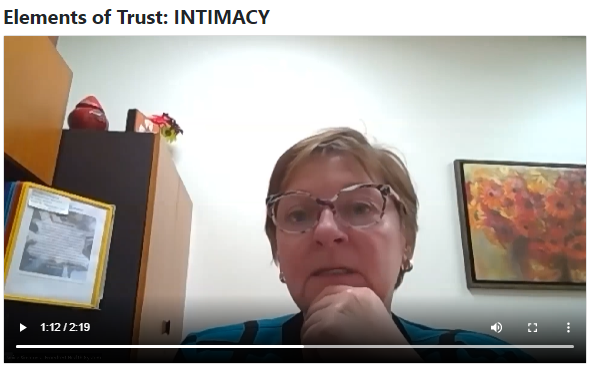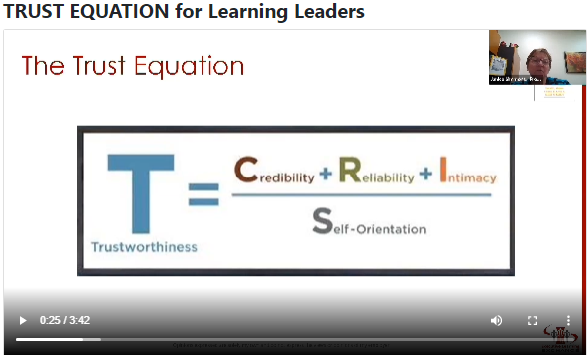This moment video is from May 24, 2022 session Trust Equation for Leading Remote Teams.
Session Focus: When we think of trust and what it means, we quickly realize it encompasses many things. In leading remote teams, Trust can be more difficult to get correct.
What we will explore together:

THE TRUST EQUATION
We use the word “trust” to:
- Interpret what people say
- Describe behaviors
- Decide if we feel comfortable sharing information
- Indicate whether we feel other people have our interests at heart
WATCH OUR VIDEO ON THE TRUST EQUATION

THE FOUR VARIABLES
The Trust Equation uses four objective variables to measure trustworthiness. These four variables are best described as Credibility, Reliability, Intimacy, and Self-Orientation.
Let’s dig into each variable a bit more:
CREDIBILITY
has to do with the words we speak. In a sentence we might say, “I can trust what she says about intellectual property; she’s very credible on the subject.”RELIABILITY
has to do with actions. We might say, “If he says he’ll deliver the product tomorrow, I trust him, because he’s dependable.”INTIMACY
refers to the safety or security that we feel when entrusting someone with something. We might say, “I can trust her with that information; she’s never violated my confidentiality before, and she would never embarrass me.”SELF-ORIENTATION
refers to the person’s focus. In particular, whether the person’s focus is primarily on him or herself, or on the other person. We might say, “I can’t trust him on this deal — I don’t think he cares enough about me, he’s focused on what he gets out of it.” Or more commonly, “I don’t trust him — I think he’s too concerned about how he’s appearing, so he’s not really paying attention.”
Source: learningexecutive.com & trustedadvisor.com
ELE produces this Learning Circle: Retooling Talent Development for the New Normal.